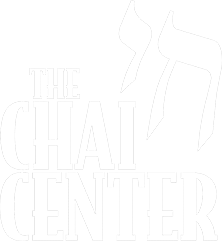From the Jewish Journal
June 1, 2012
White Night in Pico
By David Suissa
I have a feeling that several years from now, as the movement to strengthen Jewish connection in America accelerates, the coolest night of the year will be Shavuot.
You see, one of the traditions of the Shavuot festival – which commemorates the receiving of the Torah some 3,300 years ago at Mount Sinai – is to stay up all night and learn.
What could be cooler than staying up all night?
For me, the idea of going late into the night has always evoked feelings of letting go and of breaking the rules; of not allowing mundane things like fatigue to get in the way of magical moments that seem oblivious to time.
If you were around Pico Boulevard on the Saturday night of Shavuot, you would have noticed hundreds of people walking the streets past midnight. Clusters of people gathered at the entrances of synagogues, while others walked alone or in small groups to different study sessions.
After a holiday meal with the family, I started my own night at Rabbi Yonah Bookstein’s house, where he had a big crowd of young and middle-aged Jews hanging out and attending different sessions, indoors as well as outside. Although Bookstein, who runs Jewlicious and JConnectLA, is Orthodox, that didn’t stop him from teaming up with popular groups from other denominations, such as IKAR.
The event at Bookstein’s was like a Jewish version of TED talks, with different speakers giving brief talks on an innovative Torah subject of their choice. I was slotted to speak at 11 p.m., and I did a little riff on “A Commandment I’d Love to See” (“Thou shalt be curious about Jews who are different than you.”)
Rabbi Sharon Brous of IKAR, UCLA history professor David Myers, JConnectLA founder Cheston Mizel and many others spoke later in the night. I couldn’t stay because I had to head off to Temple Beth Am to participate in a midnight session on “Chavruta as a Spectator Sport.”
As I walked down Whitworth Drive toward La Cienega Boulevard, I saw a group of people dressed all in white hanging outside The Kabbalah Centre. Say what you will about the Centre, they do have a sharp sense of aesthetics: Dressing all in white under the moonlight seemed to fit perfectly the mood of the evening.
I was a little unsure about the next event, as my role was rather vague. Rabbi Adam Kligfeld of Beth Am wanted to try something new, so he asked if I would do the “color commentating” of a talmudic debate.
The debate would be between Chasidic Rabbi Shlomo Schwartz of the Chai Center and Reform Rabbi Laura Geller of Temple Emanuel of Beverly Hills.
Kligfeld, in his introductory remarks to a large and diverse crowd, set it up perfectly: “We have no idea what’s going to happen tonight.”
The subject of the debate was broad and provocative: “Will the Real Judaism Please Stand Up?” Both rabbis prepared texts to support their views: Schwartz argued that the core of the Jewish tradition is based on God’s commandments and must remain timeless and eternal; Geller argued that while God does make “claims” on us, it’s up to the individual to interpret those claims and find ways of seriously engaging with them.
The point of the evening, of course, was not to resolve a question that will be debated from here to eternity. Rather, it was to experience the texture of a difficult Jewish debate and try to understand both sides. As color commentator, I decided that my role would be to occasionally interject and bring “color” to the views of both sides.
Geller’s views were more in tune with the modern-day celebration of the self, and she pulled smartly from talmudic and poetic texts to make the case that Judaism is a religion of change and adaptation.
Schwartz, quoting Maimonides and other sages, and weaving in personal anecdotes, made his own compelling points about the need for Judaism to have common halachic standards – lest it go down the slippery slope of becoming an individual free-for-all.
Regardless of whom you agreed with, perhaps the most compelling point of the evening, whether at Beth Am or at Rabbi Bookstein’s house, was simply this: Jews of different denominations and ideologies were engaging one another and enjoying it. It might seem so obvious and natural, but in today’s splintered Jewish world, when most Jews prefer to stay in their bubbles, it’s anything but natural.
That’s why I see a potentially unifying and liberating force in Shavuot, that mysterious festival that calls us to the midnight hour – a time when, under the cover of night, we can slip out of our comfort zones.
At that midnight hour, it seems easier to mix and share and flow and try new things. It’s the spiritual equivalent of the Nuit Blanche (White Night) in Paris, when museums, galleries and cafes stay open all night so people can experience the diversity of the cultural scene.
Maybe Shavuot can become our own White Night when Jews of all backgrounds and denominations can experience the diversity of the Jewish scene; when people can mix and mingle at all-night festivals of Torah learning, poetry readings, intellectual debates, storytelling and even theater.
It would be a night when we keep our doors open, and also our minds; a night when we receive wisdom not just from God and Torah, but also from one another.
It would be, in other words, the coolest night of the year.
David Suissa is President of Tribe Media Corp and Jewish Journal. He can be reached at davids@jewishjournal.com.
